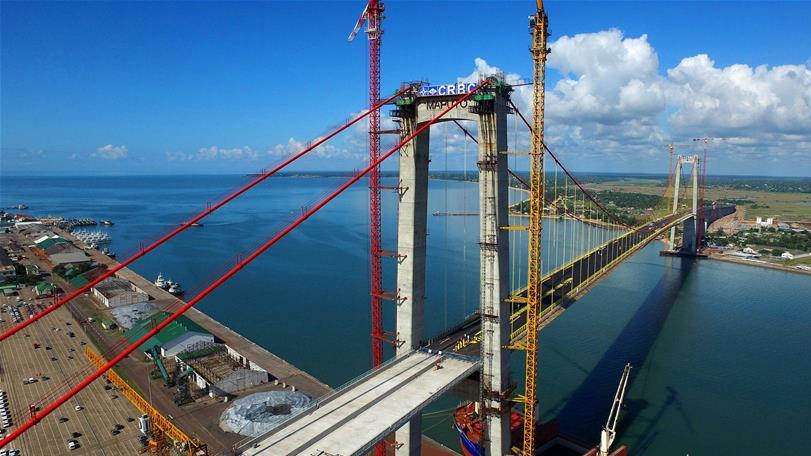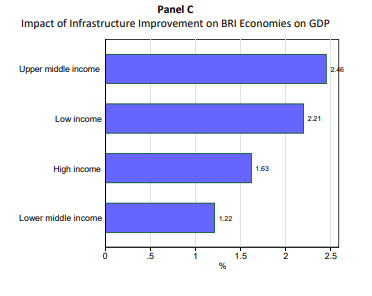
Biz Analysis
08:51, 16-Apr-2019
World Bank: BRI transport projects increase GDP for BRI economies
CGTN

A recent World Bank report shows that BRI (Belt
and Road Initiative) transport infrastructure projects have increased GDP for BRI economies
by up to 3.35 percent, and welfare, which accounts for the cost of
infrastructure, by up to 2.81 percent.
The report says the impact on BRI countries varies by region and income group. BRI upper-middle-income and low-income economies are expected to benefit the most from infrastructure improvements.
All countries are subject to border delays, so non-BRI economies can also benefit from trade facilitation reforms. Low-income countries, which tend to have long border delays, would benefit from better border management. As a consequence, demand for labor would increase pushing nominal wages up, the report explained.

Source: World Bank
Source: World Bank
The report also shows that BRI-related transport projects could increase GDP for non-BRI countries by up to 2.61 percent and for the world as a whole by up to 2.87 percent.
The World Bank cited an example that shows how the initiative transforms the economic environment in which economies in the region operate. Shipment time from China to Central Europe is about 30 days, but by train it takes half the time at a lesser price. The time and cost reduction have significant consequences for certain goods impacting the mode choice and total flows of international trade, said the World Bank on its website.
The China-proposed BRI aims to strengthen infrastructure, investment and trade by linking countries and regions that account for about 60 percent of the world's population and 30 percent of global GDP.
Last year, merchandise trade between China and countries along the BRI increased by 16.3 percent year on year, totaling 1.3 trillion U.S. dollars, according to China's Ministry of Commerce.
World Bank's engagement in BRI
The World Bank said it is already deeply engaged in countries along the Belt and Road, based on the respective country partnership frameworks.
The group has commitments of about 80 billion U.S. dollars for infrastructure in countries along the route, and also has projects addressing infrastructure, trade, and connectivity in its project pipeline. It also helps countries address trade and connectivity issues by providing advisory services and analytics (ASA), said the World Bank website.

SITEMAP
Copyright © 2018 CGTN. Beijing ICP prepared NO.16065310-3
Copyright © 2018 CGTN. Beijing ICP prepared NO.16065310-3